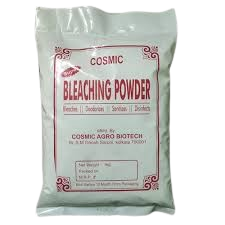Bleaching Powder
Home » Bleaching Powder
Gem Chemicals
Bleaching Powder

Bleaching Powder
Bleaching powder, also known as calcium hypochlorite (Ca(ClO)_2), is a chemical compound widely used for various purposes, primarily in sanitation and disinfection.
Bleaching powder is produced by reacting calcium hydroxide (slaked lime) with chlorine gas. The overall reaction can be represented as: Ca(OH) 2 + Cl 2 → Ca(ClO) 2 + H 2 O Ca(OH) 2 +Cl 2 →Ca(ClO) 2 +H 2 O
Bleaching powder is produced by reacting calcium hydroxide (slaked lime) with chlorine gas. The overall reaction can be represented as: Ca(OH) 2 + Cl 2 → Ca(ClO) 2 + H 2 O Ca(OH) 2 +Cl 2 →Ca(ClO) 2 +H 2 O
Applications
Water Treatment:
Water Treatment:
- Used extensively for the disinfection of drinking water and swimming pools.
- Effective against a broad spectrum of microorganisms including bacteria, viruses, and protozoa
Sanitation and Hygiene:
- Employed for disinfecting surfaces, especially in hospitals and public spaces.
- Utilized in the treatment of sewage and industrial effluents
- Acts as a bleaching agent for cotton and linen in the textile industry.
- Used in the paper industry to bleach wood pulp
- Found in some household cleaning products for its disinfectant properties.
- Used in laundries for bleaching clothes
- Can be used for disinfecting barns and agricultural tools to prevent the spread of diseases.
- Corrosive Nature: Can cause severe skin irritation and eye damage upon contact.
- Respiratory Hazard: Inhalation of dust or chlorine gas can lead to respiratory issues, including coughing, choking, and shortness of breath.
- Proper Storage: Should be stored in a cool, dry place, away from organic materials and acids, which can react violently with it




